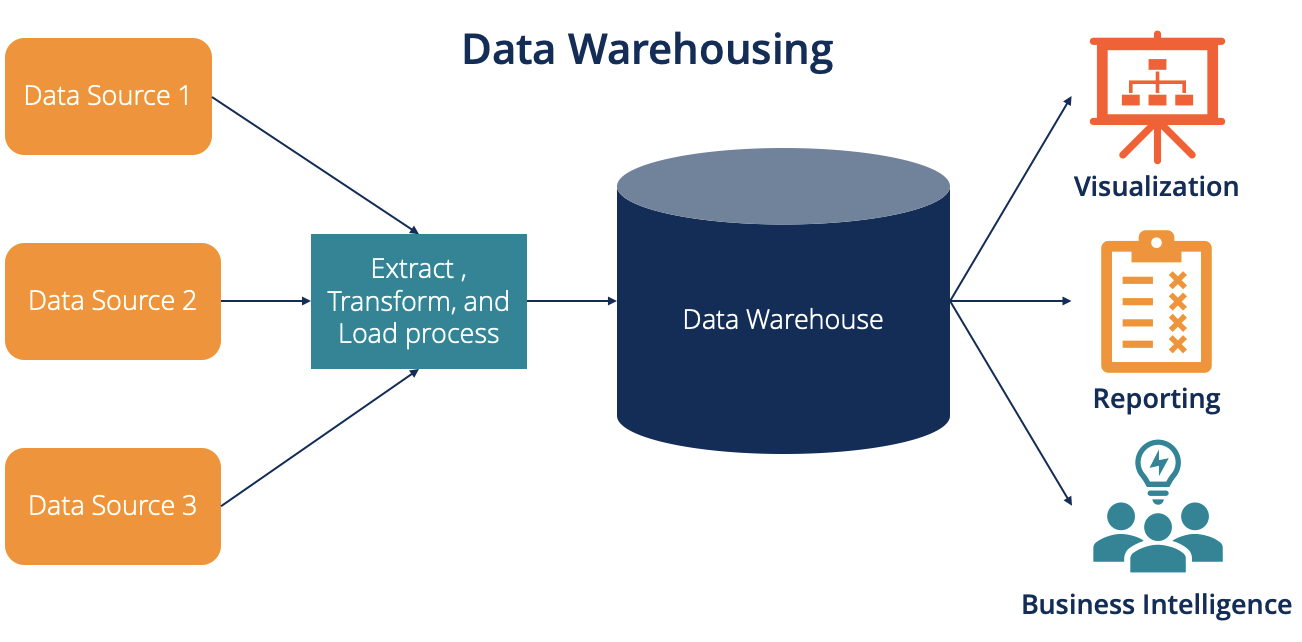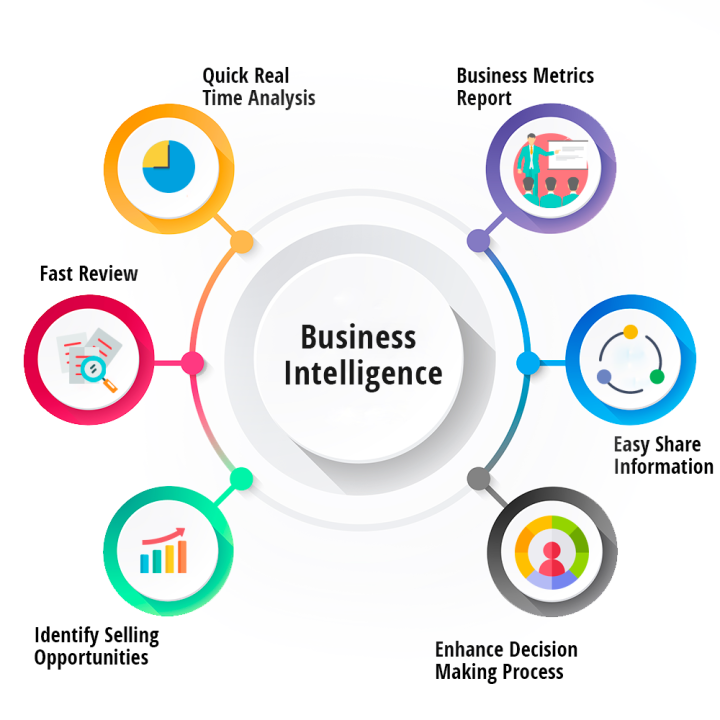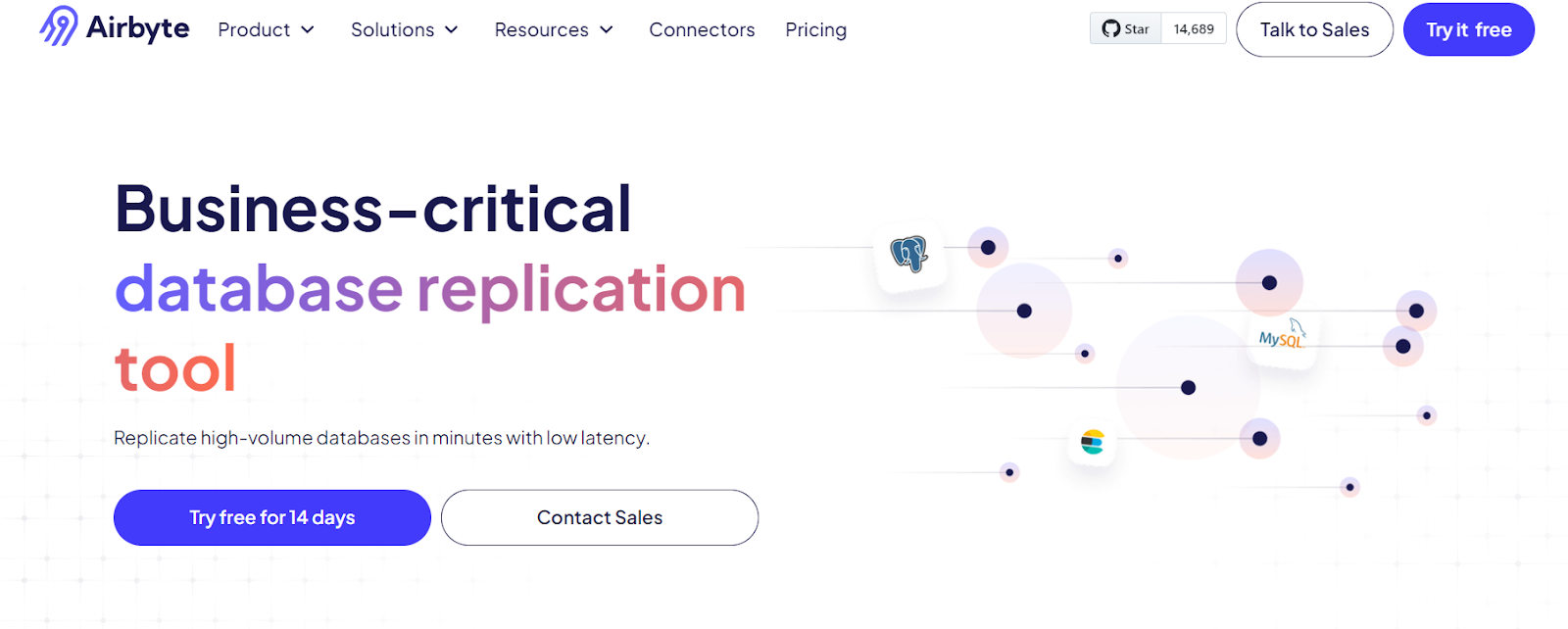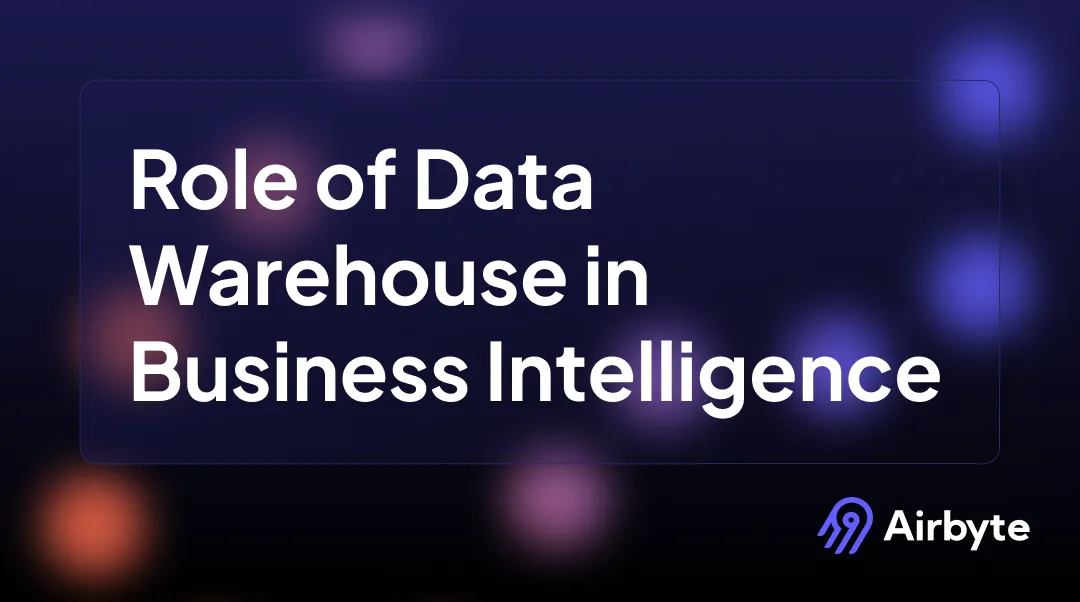What is the Role of Data Warehouse in Business Intelligence?
Summarize this article with:
✨ AI Generated Summary
Business Intelligence (BI) relies on data warehouses as centralized, integrated repositories that provide clean, consistent, and historical data for analysis, enabling informed decision-making. Modern data warehouses like Amazon Redshift and Snowflake support scalable, real-time analytics, while AI-driven analytics enhance data quality, automate pipeline management, and enable predictive insights. Key challenges include ensuring data quality, integration, security, and cost management, with tools like Airbyte simplifying data integration through extensive connectors and automated ETL processes.
Analyzing data is crucial for modern businesses. Business Intelligence (BI) helps them do exactly that, providing tools and techniques to extract valuable insights from vast datasets. However, BI needs a reliable foundation to function effectively. This is where the business intelligence data warehouse comes in— a specialized system that serves as a central repository for historical and integrated data. A BI data warehouse plays a critical role by providing a clean and consistent source of information for analysis, ultimately contributing to informed decision-making.
This article explores data warehousing, its characteristics, and its role in BI.
What Is Data Warehousing and How Does It Work?

Data warehousing involves collecting, storing, wrangling, and managing enormous amounts of data from various sources. It is a centralized repository that offers a single source of truth for consistent and reliable data analysis to support business decision-making. This data undergoes comprehensive data cleansing, is structured, transformed, and organized to provide a unified view of your organization's operations and performance.
What Is Business Intelligence and Why Does It Matter?

Business Intelligence (BI) encompasses the tools, techniques, and data orchestration processes you can leverage to create valuable data products and extract insights. Through data exploration, analysis, visualization, and data democratization, BI empowers informed decision-making, improved operational efficiency, and a competitive edge across all organizational levels.
Business intelligence data warehouses serve as the foundation for BI, providing the organized and readily accessible data needed for effective analysis. BI tools utilize data warehouses alongside other data sources to answer specific business questions, analyze trends, and support strategic planning.
What Are the Key Differences Between Data Warehousing and BI?
Data Warehousing focuses on creating and managing a centralized repository of data from various sources, ensuring consistency and accessibility for analysis. It involves data extraction from several sources, data mapping, transformation to meet target system requirements, and loading into the data warehouse. On the flip side, BI focuses on using tools to extract actionable insights from data stored in the data warehouse.
What Are the Essential Characteristics of a Business Intelligence Data Warehouse?
Data warehouses are specialized systems distinct from operational databases. Their unique characteristics make them ideal for in-depth analysis and informed decision-making. Key characteristics include:
Subject-Oriented
Operational databases focus on day-to-day transactions, whereas data warehouses organize data around business subjects (e.g., sales, marketing, customer service). This thematic approach simplifies analysis and trend discovery.
Integrated
Data warehouses enable data consolidation by ingesting information through well-defined data contracts from various sources. They clean, standardize, and deduplicate data, eliminating inconsistencies and redundancies.
Time-Variant
Storing both historical and current information allows analysis of trends, seasonal fluctuations, and performance over time.
Non-Volatile
Once loaded, data remains stable and available for future analysis, preserving historical context and supporting long-term insight generation.
How Do Data Warehouses Support Business Intelligence Operations?
Data warehouses form the backbone of BI by offering a centralized, reliable, and integrated platform for analysis:
- Single Source of Truth: Ensures consistency and accuracy.
- Enhanced Data Quality: Cleansing and standardization produce high-quality data suitable for reliable insights.
- Faster Analysis: Features like data partitioning and data distribution speed up query performance.
- Complex Queries and Exploration: Structured architecture supports deep dives into data, uncovering hidden patterns.
Which Modern Data Warehouses support BI?
- Amazon Redshift: A scalable, cost-effective AWS service featuring columnar storage, parallel query execution, and seamless integration with S3, AWS Glue, and more.
- Snowflake: A cloud-native warehouse known for performance, elasticity, and cross-cloud deployment, supporting diverse data formats.
How Are AI-Driven Analytics Transforming Data Warehouse and BI Integration?
The integration of artificial intelligence into data warehouses and BI systems represents a fundamental shift in how organizations process and analyze data.
Automated Data Pipeline Management
Modern AI systems now handle much of the heavy lifting in data warehouse operations. Machine learning algorithms automatically optimize query performance by analyzing usage patterns and adjusting resource allocation accordingly. These systems can predict when data loads will occur and pre-allocate computing resources, significantly reducing processing time and costs. Additionally, AI-powered anomaly detection continuously monitors data pipelines, identifying and addressing issues before they impact business operations.
Intelligent Data Quality and Governance
AI algorithms excel at maintaining data integrity across complex warehouse environments. Advanced pattern recognition systems identify inconsistencies, duplicates, and quality issues that traditional rule-based systems might miss. Natural language processing capabilities enable automatic classification and tagging of sensitive data, ensuring compliance with regulations like GDPR and HIPAA. These systems also provide intelligent data lineage tracking, making it easier to understand data flow and dependencies across your entire data ecosystem.
Predictive and Prescriptive Analytics Integration
The most transformative aspect of AI integration lies in its ability to move beyond descriptive analytics to predictive and prescriptive insights. Machine learning models embedded directly within data warehouses can analyze historical patterns to forecast future trends, customer behavior, and operational needs. This capability enables real-time decision-making scenarios, such as dynamic pricing adjustments, inventory optimization, and personalized customer experiences based on immediate data analysis.
Enhanced Self-Service Capabilities
AI-powered natural language interfaces are democratizing data access across organizations. Business users can now query data warehouses using conversational language, with AI systems translating these requests into complex SQL queries. This breakthrough eliminates the traditional bottleneck where business teams depended on technical staff for data analysis, enabling faster decision-making and reducing the burden on IT departments while maintaining data governance standards.
What Modern Data Integration Frameworks Are Shaping the Future of Data Warehouse and BI?
Contemporary data integration frameworks are evolving rapidly to address the increasing complexity of modern data ecosystems. These frameworks provide the architectural foundation for connecting diverse data sources with data warehouses and BI systems, emphasizing flexibility, scalability, and real-time processing capabilities.
Cloud-Native Integration Architectures
The shift toward cloud-native integration platforms has fundamentally changed how organizations approach data movement and transformation. Serverless architectures now enable automatic scaling based on workload demands, greatly reducing the need for manual resource management. Event-driven processing models allow for immediate response to data changes, supporting use cases like fraud detection and real-time personalization. These platforms also provide built-in security features, including end-to-end encryption and role-based access controls that align with enterprise governance requirements.
Real-Time Streaming and Change Data Capture
Modern frameworks prioritize real-time data processing through advanced streaming technologies and Change Data Capture mechanisms. These systems capture incremental changes from source databases and immediately propagate them to data warehouses, enabling near-instantaneous analytics. Streaming architectures support complex event processing, allowing organizations to analyze data patterns as they occur rather than waiting for batch processing cycles. This capability is essential for applications requiring immediate insights, such as supply chain monitoring, customer service optimization, and financial risk management.
Data Mesh and Decentralized Governance
The data mesh paradigm represents a significant shift from centralized data management to domain-driven ownership models. This approach empowers individual business units to manage their data as products while maintaining standardized interfaces for cross-domain collaboration. Federated governance ensures consistency across domains while allowing for specialized optimization within each area. Data mesh architectures reduce bottlenecks associated with centralized data teams and enable more agile responses to changing business requirements.
Integration Platform as a Service Evolution
Modern Integration Platform as a Service solutions combine the flexibility of cloud deployment with sophisticated data transformation capabilities. These platforms provide pre-built connectors for hundreds of data sources while supporting custom integration development through low-code and no-code interfaces. Advanced workflow orchestration capabilities enable complex data processing scenarios involving multiple transformation steps, quality checks, and approval processes. The evolution toward API-first architectures ensures seamless integration with existing enterprise systems and future technology adoption.
What Are the Major Challenges with Data Warehousing and BI Implementation?
- Data Quality and Consistency: Issues such as missing values, inaccuracies, and duplicates require rigorous processes like data imputation for missing data, and techniques such as Change Data Capture (CDC) for maintaining data consistency.
- Integration with Existing Systems: Careful data preprocessing and alignment with current infrastructure are essential.
- Data Security, Privacy, and Observability: Robust controls and data observability practices safeguard against breaches and compliance violations.
- Cost Management: Strategic resource allocation and continuous optimization are necessary to ensure ROI.
How Can You Streamline Data Warehousing in BI with Airbyte?

Airbyte simplifies data integration into your warehouse:
- 600+ pre-built data connectors and support for custom connectors.
- Automated ETL via intuitive data pipelines with full-table and incremental CDC replication.
- Integrations with Airflow, Prefect, Dagster, dbt, and more.
- PyAirbyte offers Python-native access for developers.
Conclusion
The exponential growth of data presents organizations with the challenge of extracting actionable insights. Business intelligence data warehouses provide a centralized, reliable, and integrated platform—acting as a single source of truth—while BI tools analyze, interpret, and visualize this data to reveal hidden patterns and trends.
Frequently Asked Questions
What is the relationship between data warehouses and business intelligence?
Data warehouses store centralized, integrated, historical data, forming the foundation for business intelligence. BI tools then analyze this data, generating reports, dashboards, and insights, turning organized data into actionable information for informed decision-making.
How do modern cloud data warehouses differ from traditional on-premises solutions?
Modern cloud data warehouses offer elastic scalability, pay-as-you-use pricing models, and automatic maintenance, while traditional on-premises solutions require upfront hardware investments and dedicated IT resources. Cloud solutions also provide better integration with modern BI tools and support for real-time analytics through features like auto-scaling and distributed processing.
What role does data quality play in successful BI implementations?
Data quality ensures BI insights are accurate, reliable, and trustworthy. Poor quality can lead to flawed analysis and decisions. Implement robust cleansing, validation, and governance to provide consistent, high-quality data for BI tools to generate actionable insights.
How can organizations measure the ROI of their data warehouse and BI investments?
Organizations can measure ROI by tracking metrics such as improved decision-making speed, reduced operational costs through automated reporting, increased revenue from data-driven insights, and enhanced operational efficiency. Additional indicators include reduced time-to-insight for business questions, improved data accessibility across teams, and decreased reliance on manual data processing tasks.
What security considerations are most important for data warehouse and BI systems?
Key security measures for data warehouses and BI systems include role-based access, end-to-end encryption, audit logging, regulatory-compliant data governance, and regular security assessments with monitoring to detect unauthorized access or breaches.

.webp)
